The Russian Revolution – Concept & Notes PDF
Topic & sub-topics covered: The Russian Revolution and MCQs Questions: Socialism in Europe and the Russian Revolution (All single detail notes are exam-oriented).
We have discussed in-depth and exam-oriented pointers that can be asked in the board exam of class 9th about the “The Russian Revolution” from the NCERT History notes for class 9th chapter 2nd “Socialism in Europe and the Russian Revolution“.
Download the NCERT History for Class 9th Chapter 2 Socialism in Europe and the Russian Revolution Notes PDF
Looking for clear, concise NCERT notes on Chapter 2: Socialism in Europe and the Russian Revolution? Download the NCERT History Class 9 Chapter 2 Notes PDF and make your revision easier. These notes break down key events, important terms, and timeline-based developments – from the rise of socialism in Europe to how the Russian Revolution changed global politics. Perfect for quick revision before exams, class tests, or just to understand the chapter better. Click to download the free PDF now and study smarter.
The Russian Revolution
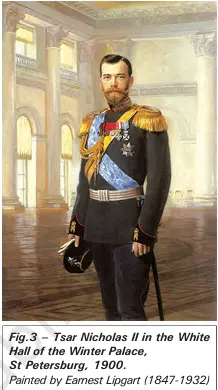
- Russia was one of the least industrialised European states before the revolution.
- Despite limited industrialisation, Russia witnessed a socialist revolution.
- The October Revolution of 1917 led to socialists taking over the Russian government.
- The fall of the monarchy in Russia occurred in February 1917, marking the end of Tsarist rule.
- The events of February and October 1917 together are collectively known as the Russian Revolution.
- The Russian Revolution is considered a major turning point in world history as it led to the rise of socialism in a major nation.
- The paragraph hints at the need to understand the social and political conditions in Russia before 1917 to fully grasp the causes of the revolution.
The Russian Empire in 1914
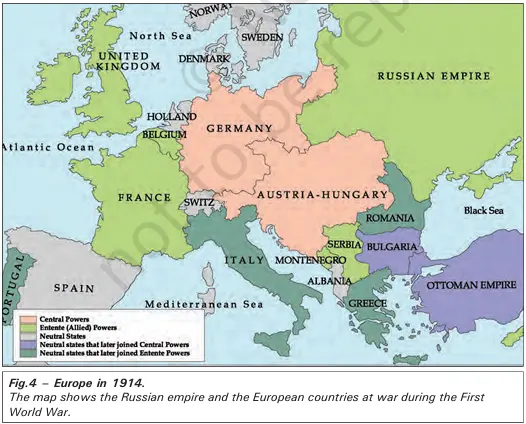
- In 1914, the Russian Empire was ruled by Tsar Nicholas II.
- The empire included present-day Russia and many surrounding regions.
- Territories under the Russian Empire included:
a. Finland, Latvia, Lithuania, Estonia
b. Parts of Poland, Ukraine, Belarus
c. Extended to the Pacific Ocean
d. Included Central Asian states, Georgia, Armenia, and Azerbaijan - The majority religion in the Russian Empire was Russian Orthodox Christianity.
- Russian Orthodox Christianity originated from the Greek Orthodox Church.
- The empire was religiously diverse, including:
a. Catholics
b. Protestants
c. Muslims
d. Buddhists
Economy and Society
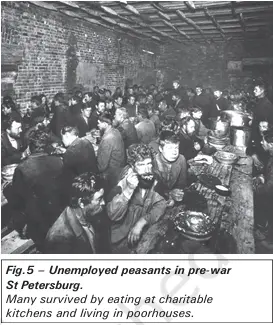
1. Agricultural Structure:
- At the start of the 20th century, 85% of Russia’s population were agriculturists, much higher than France or Germany (40–50%).
- Russian peasants produced for both market and self-use.
- Russia was a major exporter of grain in the global market.
2. Industrial Development:
- Industries were limited to pockets, mainly in St. Petersburg and Moscow.
- Both craft workshops and large factories operated side by side.
- Rapid industrialization occurred in the 1890s due to:
a. Expansion of the railway network.
b. Increased foreign investment. - As a result:
a. Coal production doubled.
b. Iron and steel output quadrupled. - By 1900s, factory workers and craftsmen were almost equal in some regions.
3. Workers’ Conditions:
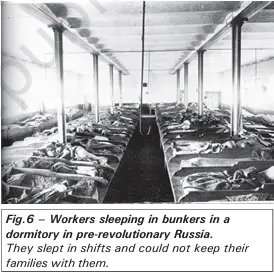
- Most industries were privately owned.
- Government supervised factories for minimum wages and limited working hours, but often failed to enforce rules.
- Working hours:
a. 10–12 hours in factories.
b. Up to 15 hours in small workshops and craft units. - Workers lived in mixed accommodations – rooms or dormitories.
4. Social Divisions Among Workers:
- Workers were divided by skill and village vs. city links:
Example: Metalworkers saw themselves as elite or “aristocrats” of the working class. - Women made up 31% of the factory workforce by 1914, but were paid less than men (½ to ¾ of men’s wages).
- Few workers’ associations existed to support members during unemployment or crisis.
5. Strikes And Protests:
- Despite divisions, workers united to strike over work conditions or dismissals.
- Major strikes:
a. Textile industry (1896–97)
b. Metal industry (1902)
6. Peasants And Landowners:
- Peasants cultivated most of the land, but nobility, crown, and Orthodox Church owned large estates.
- Russian peasants were divided socially and deeply religious.
- Unlike French peasants, Russian peasants had no respect for the nobility, who served the Tsar, not local interests.
- Peasants wanted noble lands redistributed to them.
7. Peasant Unrest:
- Peasants often refused to pay rent and murdered landlords:
a. South Russia (1902)
b. Across Russia (1905)
8. Commune System (MIR):;
- Russian peasants practiced communal landholding.
- Land was pooled and redistributed periodically by the village commune (mir) based on family needs.
- This system differentiated Russian peasants from other European peasants.
Socialism in Russia
Political Developments in Pre-Revolutionary Russia (Before 1914):
1. Ban on Political Parties:
- All political parties were banned in Russia before 1914 under Tsarist rule.
- Political groups had to function illegally due to strict government policing.
2. Russian Social Democratic Workers Party (1898):
- Founded in 1898 by socialists inspired by Karl Marx.
- The party:
a. Operated secretly.
b. Published underground newspapers.
c. Mobilised workers.
d. Organised strikes to demand workers’ rights.
3. Socialist Revolutionary Party (1900):
- Formed in 1900 to represent peasant interests.
- Believed that the Russian peasant tradition of redistributing land made them natural socialists.
- Demanded transfer of land from nobles to peasants.
- Operated mainly in rural areas throughout the late 19th century.
4. Disagreement Among Socialists:
- Social Democrats vs. Socialist Revolutionaries:
a. Social Revolutionaries: Believed peasants would lead the revolution.
b. Social Democrats (Lenin’s view): Believed workers, not peasants, would lead. - Lenin’s Argument:
a. Peasants were not a united class.
b. They were economically divided:
i. Poor peasants.
ii. Rich peasants.
iii. Landowners employing labourers.
5. Party Division: Bolsheviks vs. Mensheviks:
- The party split over organisational strategy:
a. Bolsheviks (Lenin’s group):
i. Favoured a disciplined party.
ii. Wanted to limit membership to committed revolutionaries.
b. Mensheviks:
i. Favoured a broad-based party open to all.
ii. Followed the German model of socialism.
A Turbulent Time: The 1905 Revolution
Political Conditions in Russia Before 1917 & the 1905 Revolution:
1. Autocracy in Russia:
- Russia was an autocracy – the Tsar had absolute power, unlike other European rulers.
- The Tsar was not answerable to any parliament even in the early 20th century.
2. Rise of Political Opposition:
- Liberals, Social Democrats, and Socialist Revolutionaries campaigned for:
a. An end to autocracy.
b. A constitution. - These groups mobilised workers and peasants during the 1905 Revolution.
- Nationalists in places like Poland, and Muslim reformers (Jadidists), supported the movement demanding political reform.
The 1905 Revolution: Causes & Events:
1. Economic Crisis & Worker Discontent:
- 1904 was a bad year for workers – essential prices rose sharply.
- Real wages fell by 20%, worsening living conditions.
- Worker unrest grew:
a. Workers’ associations gained popularity.
b. Putilov Iron Works dismissed 4 workers, sparking a large-scale strike. - 110,000 workers in St Petersburg joined the strike with demands:
a. 8-hour workday.
b. Higher wages.
c. Better working conditions.
2. Bloody Sunday (22 January 1905):
- A peaceful procession of workers led by Father Gapon marched to the Winter Palace.
- The Tsar’s troops opened fire:
a. 100+ workers killed
b. 300+ injured. - This violent attack is known as “Bloody Sunday”, which triggered the 1905 Revolution.
3. Spread of the 1905 Revolution:
- Strikes spread across Russia.
- Universities shut down after student protests demanding civil liberties.
- Middle-class professionals (lawyers, engineers, doctors) formed the Union of Unions.
- They demanded the creation of a constituent assembly.
4. The Duma & Tsar’s Response:
- In response, the Tsar allowed the formation of an elected Parliament called the Duma.
- For a short time, trade unions and factory committees (by workers) were allowed.
5. Suppression After the Revolution:
- After 1905:
a. Most unions and committees were banned again.
b. Political activity was heavily restricted. - The first Duma was dismissed within 75 days.
- The second Duma was also dissolved within 3 months.
- Tsar Nicholas II:
a. Resisted any check on his power.
b. Changed voting laws to favor conservative members.
c. Ensured that liberals and revolutionaries were excluded from the third Duma.
The First World War and the Russian Empire
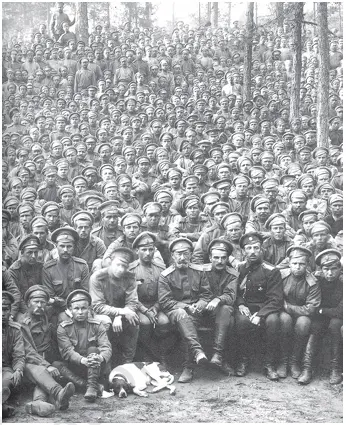
1. Background of World War I:
- The First World War began in 1914.
- The war was fought between:
a. Central Powers: Germany, Austria, Turkey.
b. Allied Powers: France, Britain, Russia (later joined by Italy and Romania). - All countries involved had global empires, so the war was fought both in Europe and outside it.
2. Russia’s Role and Public Sentiment:
- Initially, the war was popular in Russia – people supported Tsar Nicholas II.
- Support for the Tsar declined because he refused to consult the Duma (Parliament).
- Anti-German sentiment increased: St Petersburg (a German name) was renamed Petrograd.
- Tsarina Alexandra (of German origin) and her association with Rasputin (a controversial monk) damaged the monarchy’s image.
3. War on the Eastern vs Western Front:
- On the Western Front, war was fought from trenches (e.g., in France).
- On the Eastern Front (where Russia fought), there was constant movement and massive casualties.
- Between 1914 and 1916, Russian armies suffered heavy defeats in Germany and Austria.
- By 1917, there were over 7 million Russian casualties.
4. Impact on Civilians and Refugees:
- As Russian troops retreated, they followed a “scorched earth” policy – destroying crops and buildings to deny resources to the enemy.
- This led to the displacement of over 3 million refugees inside Russia.
- The destruction discredited the Tsar and government; soldiers were demoralised and lost interest in fighting.
5. Economic & Industrial Breakdown:
- Russia had few industries and was cut off from industrial imports (due to German control of the Baltic Sea).
- Industrial equipment wore out faster than in other countries.
- By 1916, railways started failing.
- Many able-bodied men were drafted, causing labour shortages in industry.
- Small workshops shut down, and production of essentials declined.
- Large quantities of grain were diverted to the army, causing scarcity of bread and flour in cities.
- By winter 1916, bread riots became common in urban areas.
6. Revolutionary Activity & Worker Mobilization:
- Socialist workers like Alexander Shlyapnikov described secret propaganda and agitation among factory workers.
- Propaganda methods included:
a. Individual discussions inside plants and shops.
b. Legal meetings disguised as official gatherings.
c. Illegal meetings during breaks, near exits, stairs, or factory yards. - Workers formed “plugs” at doorways to block exits for quick meetings.
- Agitators gave speeches before management could call the police.
- By the time the police arrived, decisions were already made – showing highly organised revolutionary spirit.
New words:
- Jadidists – Muslim reformers within the Russian empire.
- Real wage – Reflects the quantities of goods which the wages will actually buy.
Next & Previous Topics of NCERT/CBSE History Class 9 Chapter 2: Socialism in Europe and the Russian Revolution
| Topics No. | Topics Name |
|---|---|
| 1 | The Age of Social Change |
| 2 | The Russian Revolution |
| 3 | The February Revolution in Petrograd |
| 4 | What Changed After October? |
| 5 | The Global Influence of the Russian Revolution and the USSR |
MCQs on NCERT History Class 9 Chapter 2 Topic – The Russian Revolution
Here are the top exam-oriented MCQ-type questions on “The Russian Revolution” that you should prepare for your CBSE or state board exams:
Question 1. What event is referred to as the Russian Revolution?
A) The defeat of Germany in World War I
B) The assassination of Tsar Nicholas II
C) The fall of monarchy in February 1917 and the October Revolution
D) The formation of the Duma
Answer: C
Question 2. Who ruled the Russian Empire in 1914?
A) Lenin
B) Tsar Nicholas II
C) Joseph Stalin
D) Karl Marx
Answer: B
Question 3. Which of these regions was part of the Russian Empire in 1914?
A) Portugal
B) Finland
C) Spain
D) Norway
Answer: B
Question 4. The majority religion in the Russian Empire was:
A) Catholicism
B) Buddhism
C) Russian Orthodox Christianity
D) Protestantism
Answer: C
Question 5. What percentage of Russia’s population were agriculturists in the early 20th century?
A) 60%
B) 85%
C) 40%
D) 25%
Answer: B
Question 6. Which country had a lower percentage of agricultural population compared to Russia?
A) India
B) France
C) Afghanistan
D) China
Answer: B
Question 7. Industrial growth in Russia increased significantly in the 1890s due to:
A) Invention of tractors
B) Nationalisation of land
C) Extension of railway and foreign investment
D) Collapse of British industry
Answer: C
Question 8. Which statement best describes workers in early 1900s Russia?
A) They all lived in luxury
B) They had equal rights and wages
C) They were divided by skills, income, and village ties
D) Most were self-employed
Answer: C
Question 9. What percentage of factory workers were women in 1914?
A) 10%
B) 50%
C) 31%
D) 75%
Answer: C
Question 10. How did Russian peasants differ from those in Western Europe?
A) They were better educated
B) They paid higher taxes
C) They respected the nobility
D) They periodically pooled and redistributed land
Answer: D
Question 11. Before 1914, political parties in Russia were:
A) Free and legal
B) Banned by law
C) Supported by the Tsar
D) Dominated by liberals
Answer: B
Question 12. The Russian Social Democratic Workers Party was founded in:
A) 1914
B) 1898
C) 1905
D) 1922
Answer: B
Question 13. What was the main difference between the Social Democrats and Socialist Revolutionaries?
A) Their religion
B) Their view of peasants
C) Their alliance with Britain
D) Their support for the monarchy
Answer: B
Question 14. Who led the Bolshevik group?
A) Trotsky
B) Rasputin
C) Lenin
D) Kerensky
Answer: C
Question 15. The Mensheviks believed the party should:
A) Be restricted to elite members
B) Be open to all
C) Remain underground
D) Support the monarchy
Answer: B
Question 16. What kind of government was Russia before the 1905 Revolution?
A) Democracy
B) Monarchy under Parliament
C) Autocracy
D) Constitutional Republic
Answer: C
Question 17. What triggered the 1905 Revolution?
A) World War I
B) Execution of Lenin
C) Massacre of protesting workers on Bloody Sunday
D) Collapse of Russian currency
Answer: C
Question 18. What happened on Bloody Sunday (1905)?
A) The Tsar gave land to peasants
B) Over 100 peaceful protestors were killed
C) Germany declared war on Russia
D) Trotsky became Prime Minister
Answer: B
Question 19. What demand did the protesters NOT make during the 1905 Revolution?
A) 8-hour workday
B) Increased wages
C) End to monarchy
D) Better working conditions
Answer: C
Question 20. What was the Duma?
A) A military group
B) An elected consultative Parliament
C) A workers’ union
D) A secret police force
Answer: B
Question 21. Why was the third Duma dominated by conservatives?
A) Liberals refused to contest
B) The Tsar changed voting laws
C) Revolutionaries were in jail
D) Socialists took over it
Answer: B
Question 22. Which alliance did Russia join in World War I?
A) Axis Powers
B) Central Powers
C) Allied Powers
D) Neutral States
Answer: C
Question 23. What led to the decline in Tsar’s popularity during World War I?
A) His victory in France
B) German roots of the Tsarina and Rasputin’s influence
C) Promotion of democracy
D) End of monarchy
Answer: B
Question 24. Why was the war particularly hard on Russia’s economy?
A) It lost trade with Africa
B) Baltic Sea was blocked and industries broke down
C) Russia ran out of coal
D) Taxes were abolished
Answer: B
Question 25. By the winter of 1916, people in cities faced shortages of:
A) Soldiers
B) Gold
C) Bread and flour
D) Furniture
Answer: C
Question 26. What was the impact of defeats on the eastern front?
A) Nationalism increased
B) Refugees increased and the army was demoralised
C) Russia won major territories
D) Peasants were given land
Answer: B
Question 27. Why did industrial production decline during the war?
A) All factories were shifted to China
B) Machinery was upgraded
C) Men went to war and equipment broke down
D) Raw materials were stolen
Answer: C
Question 28. What does Source A describe?
A) Tsar’s assassination
B) Worker strikes and underground meetings
C) Role of Rasputin
D) Actions of the army
Answer: B
Question 29. How were illegal meetings organised, as per Shlyapnikov?
A) On official holidays
B) With government permission
C) Spontaneously but in a structured way
D) Via newspapers
Answer: C

